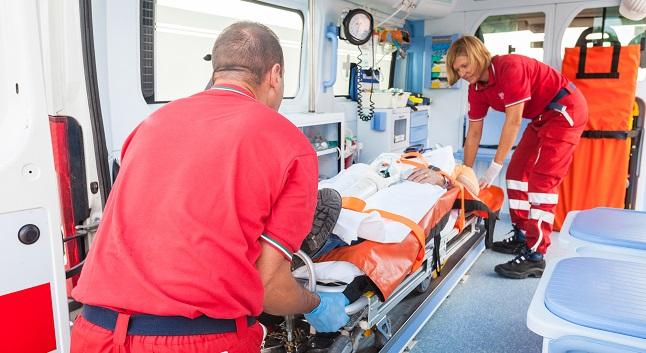New Guidelines for Cardiogenic Shock Push for Regionalized Care, More Research
The multidisciplinary document makes the case for a hub-and-spoke management system with echoes in STEMI and trauma care.

The American Heart Association has issued a new scientific statement summarizing the contemporary management of cardiogenic shock—the first time such a stand-alone, multidisciplinary document has been developed for this life-threatening condition.
Previously, guidance on cardiogenic shock has been included in European and American documents covering STEMI and NSTE ACS. According to writing group chair Sean van Diepen, MD (University of Alberta, Edmonton, Canada), these guidelines are the first from an international society and the first to involve a multidisciplinary group, consisting of general cardiologists, interventional cardiologists, heart failure and transplant experts, surgeons, a pharmacist, a nurse, and a cardiac intensivist.
“Cardiogenic shock guidelines have previously been divided among other subspecialized guideline documents including ACS, heart failure, hypertrophic cardiomyopathy, etc.,” van Diepen said. “So one of the goals of this document was to create a single resource for the broad-based management of cardiogenic shock.”
The new guidelines, published online September 18, 2017, ahead of print in Circulation, include “pragmatic and clinical trial” definitions of cardiogenic shock, provide historical perspectives, and detail the pathophysiology and pathogenesis of the condition. They also offer clear differentiation of different cardiogenic shock phenotypes, emphasizing that cardiogenic shock can have a “hemodynamically diverse presentation,” van Diepen noted.
“Although most patients are classically ‘cold and wet,’ there should be increasing recognition of vasodilatory and euvolemic cardiogenic shock,” he said. “We also advocate for more hemodynamically guided medical management of these diverse shock presentations. That is, there shouldn't be one [choice of] vasopressor/inotrope, but rather physicians should consider the hemodynamic phenotype in the selection of their vasoactive agents.”
Regionalized Care
A key component of the guidelines is its proposed integrated cardiogenic shock care pathway, including the concept of hub-and-spoke systems that incorporate mobile cardiogenic shock teams.
“We know both anecdotally and from the published literature that these systems have been popping up, but until now there hasn’t been a framework for cardiogenic shock management on a regional level,” van Diepen said. These systems, he added, can be created to mirror existing STEMI or trauma systems wherein the care of the sickest patients is centralized at cardiogenic shock hub centers.
The decision on whether to take a patient directly to a hub center depends, he added, on the distance between the hub and spoke hospital, and the capabilities of the spoke centers. In some circumstances, if a patient has an acute MI complicated by cardiogenic shock and is close to a PCI center, “it may make sense to present to the PCI-capable hospital,” he said. “Then, if the patient does not rapidly improve or deteriorates, mobile cardiogenic shock teams could provide support to the spoke center.”
The guidelines advocate for an early invasive strategy in the setting of ACS, with fibrinolysis only considered in patients with cardiogenic shock associated with STEMI where an early invasive approach is not possible. Guidance is also provided related to adjunctive pharmacotherapy, revascularization type, and medical management. “In the settings of moderate-to-severe cardiogenic shock and in those not expected to recover, we also advocate for timely mechanical circulatory support after assessment by a multidisciplinary shock team,” van Diepen said. Temporary mechanical circulatory support can be considered prior to reperfusion in the cases of refractory cardiac arrest or shock, the guidelines note.
“We don’t provide definitive suggestions for either the timing or the patient selection for these devices,” van Diepen told TCTMD. “What we do say is that the selection of these devices and the timing should be determined by a multidisciplinary shock team and that decisions should be individualized to the patient.”
Another novel aspect of the guidelines is the recommendation that a palliative care physician be a member of the cardiogenic shock team. “Palliative care is traditionally thought to be comfort care, but these physicians are also experts in symptom control and given the high morbidity and mortality in this patient population, we believe it may be beneficial to have palliative care physicians as part of the multidisciplinary team,” van Diepen said.
Lastly, according to van Diepen, what was clear to the writing group in compiling this document was the dearth of research in the field, despite the fact that cardiogenic shock is the most common cause of in-hospital death in MI patients. Only a few treatment strategies currently in use have the support of randomized clinical trials, the authors note.
“We definitely believe there is a clear need for further research in cardiogenic shock and we dedicate an entire section and table outlining important areas for future research,” van Diepen told TCTMD. “It's clearly a high mortality and morbidity condition where relatively little research has been dedicated.”
Shelley Wood is the Editor-in-Chief of TCTMD and the Editorial Director at CRF. She did her undergraduate degree at McGill…
Read Full BioSources
van Diepen S, Katz JN, Albert NM, et al. Contemporary management of cardiogenic shock: a scientific statement from the American Heart Association. Circulation. 2017;Epub ahead of print.
Disclosures
- van Diepen reports no relevant conflicts of interest.


Comments